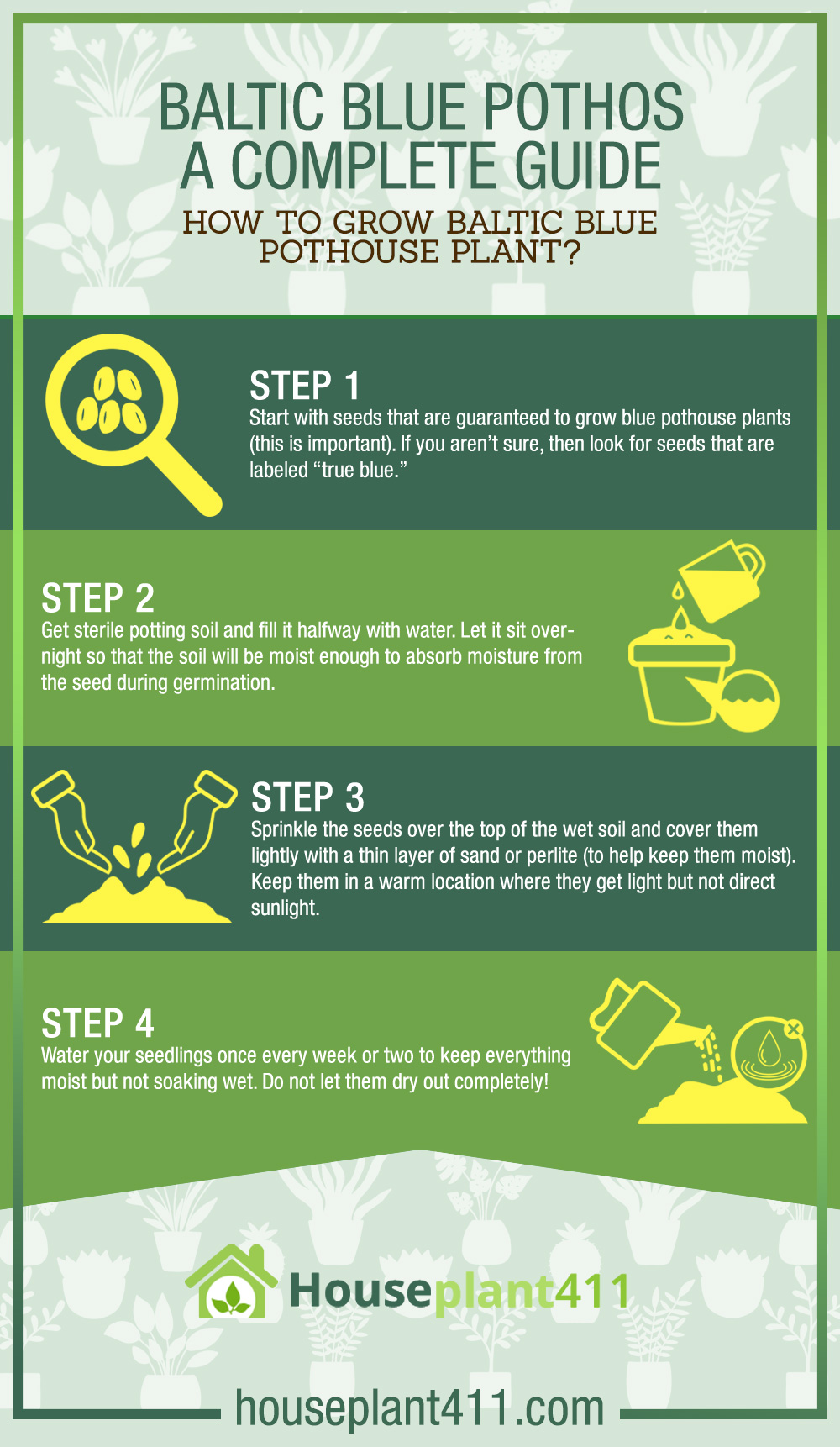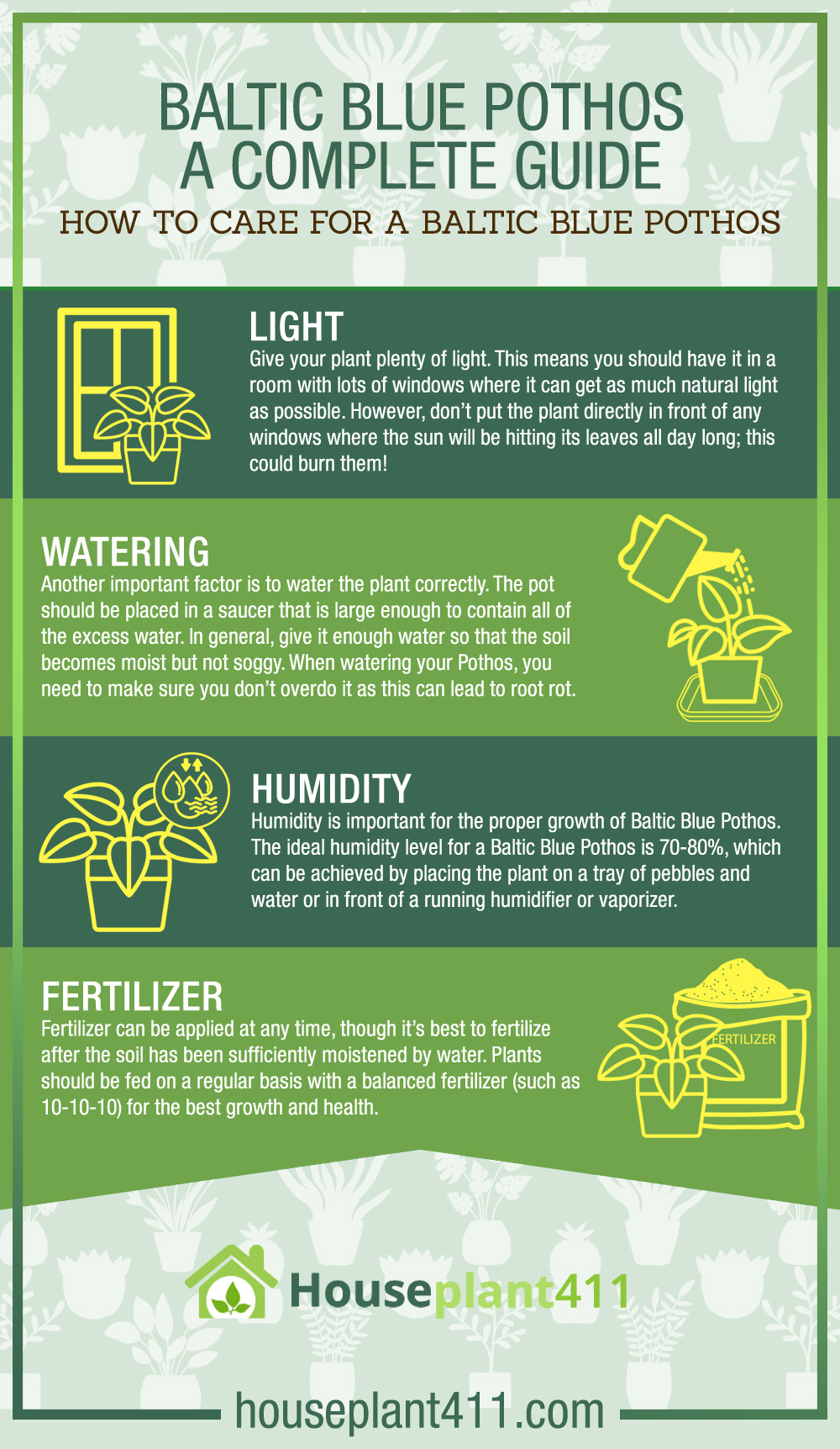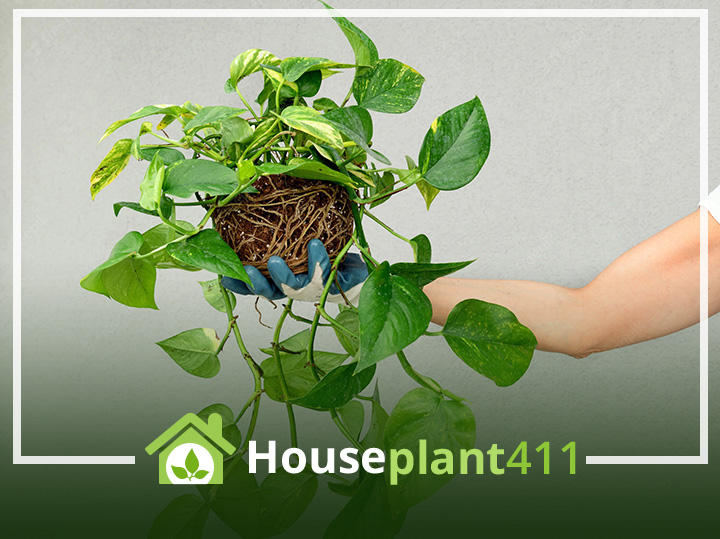Pothos is one of the most popular indoor plants and for a good reason. They’re easy to care for, can survive in low light conditions and are very forgiving when it comes to watering or fertilizing. However, there are many different types of pothos with different colors so let’s take a closer look at Baltic Blue Pothos!
What is the Baltic Blue Pothos?
Baltic Blue Pothos is a beautiful houseplant that belongs to the Araceae family. It is commonly known as a philodendron, and it can grow up to 20 feet in length. This plant has beautiful heart-shaped leaves that are dark green in color.
The plant is best suited for indoor use because its large size makes it difficult to be raised outdoors in temperate regions throughout the year. However, you can grow it outdoors if you live in warm climates where temperatures don’t drop below 55°F (13°C).
When deciding on what type of potting soil should be used when planting Baltic Blue Pothos, consider how much light your plant will receive and how often you plan on watering it.
How to Grow Baltic Blue Pothouse Plant?
Growing a Baltic Blue Pothouse Plant is easy. The plant only requires minimal care and can be grown in most parts of the world, though it does best in warm climates. Following are the steps for growing Baltic Blue Pothos from seeds:
Step 1: Start with seeds that are guaranteed to grow blue pothouse plants (this is important). If you aren’t sure, then look for seeds that are labeled “true blue.”
Step 2: Get sterile potting soil and fill it halfway with water. Let it sit overnight so that the soil will be moist enough to absorb moisture from the seed during germination.
Step 3: Sprinkle the seeds over the top of the wet soil and cover them lightly with a thin layer of sand or perlite (to help keep them moist). Keep them in a warm location where they get light but not direct sunlight.
Step 4: Water your seedlings once every week or two to keep everything moist but not soaking wet. Do not let them dry out completely!

How to Care for a Baltic Blue Pothos
When it comes to caring for a Baltic Blue Pothos, there are some simple rules that will keep your plant healthy and happy. Here’s what you need to know:
Light
Give your plant plenty of light. This means you should have it in a room with lots of windows where it can get as much natural light as possible. However, don’t put the plant directly in front of any windows where the sun will be hitting its leaves all day long; this could burn them! Instead, position the plant near a window so that only part of its leaves receives direct sunlight at any given time.
Watering
Another important factor is to water the plant correctly. The pot should be placed in a saucer that is large enough to contain all of the excess water. In general, give it enough water so that the soil becomes moist but not soggy. When watering your Pothos, you need to make sure you don’t overdo it as this can lead to root rot. Also, don’t allow the soil surface to dry out completely between watering as this may cause brown patches on the leaves called chlorosis (iron deficiency).
Chlorosis can be caused by several factors such as too much sun or wind, low temperatures in winter months and even low humidity levels in air conditioning systems during summer months.
Humidity
Humidity is important for the proper growth of Baltic Blue Pothos. The ideal humidity level for a Baltic Blue Pothos is 70-80%, which can be achieved by placing the plant on a tray of pebbles and water or in front of a running humidifier or vaporizer. If you’re growing your plant indoors, make sure it has plenty of room to grow and that there aren’t any vents nearby that might dry out the air too quickly.
Fertilizer
Fertilizer can be applied at any time, though it’s best to fertilize after the soil has been sufficiently moistened by water. Plants should be fed on a regular basis with a balanced fertilizer (such as 10-10-10) for the best growth and health. Products containing micronutrients are usually included in these formulas and should not be omitted unless your plant is particularly sensitive to them.
Fertilizers designed specifically for indoor plants will have lower concentrations of phosphate than those designed for outdoor use, since plants are typically kept in containers indoors where they don’t need as much phosphorus as they would if they were planted directly into the ground outside.
If you choose not to fertilize your plant, make sure that you’re providing plenty of humidity so that its roots have access to moisture since this will help them grow more efficiently without needing more fertilizer!

Best Potting Soil for Baltic Blue Pothos.
It’s important to choose a type of soil that’s light and well-drained. Avoid soils that are too heavy and compacted, or too loose and airy. If you use the wrong soil for your Baltic Blue Pothos, it can lead to root rot or other problems.
Some people think that using acidic soil is best because it helps slow down the rate at which roots grow — but they’re actually wrong! If you’re not careful with your Baltic Blue Pothos, it may have trouble taking in nutrients from the soil if it is too acidic or alkaline (in addition to other issues).
How to Repot Baltic Blue Pathos?
Repotting is a good way to improve the health of your plant, as well as ensure that it’s getting the right amount of water and nutrients. As with any other houseplant, you’ll want to check your Baltic Blue Pothos for signs of over or under-watering. If its leaves turn yellow and droopy on one side, it’s likely suffering from overwatering. If they turn brown and crispy around the edges, however, it may be dehydrated.
The best time to repot your plant is when its roots have filled up the pot it’s currently in (you can tell by pressing gently on the soil). If you see roots poking out through drainage holes at any point during this process, then don’t worry—they’ll adjust! Just make sure not too much water gets into those holes; otherwise, rot could set in quickly!
You should also consider upgrading your pot every few years if yours starts looking worn or dirty—this is especially important if you plan on keeping it indoors all year long rather than bringing it outside only during summer months (which most experts recommend). When selecting what type might work best remember that they need plenty of light but relatively little water so choose something with good drainage holes instead of those made out of plastic which tend to hold onto moisture longer than necessary.
How to Propagate Baltic Blue Pothos?
Now that you know everything there is to know about the Baltic Blue Pothos, it’s time to learn how you can best care for your plant. Propagating Baltic Blue Pothos is easy and fun and you can do it yourself. Here are some ways:
- Cuttings – Take a stem with at least 3 leaves and place it in a container filled with moist soil. Cover the container with plastic wrap or tinfoil and leave it in indirect sunlight for 6-8 weeks. Your cutting will sprout roots from its nodes as well as new leaves! This is great if you want to create more plants of this variety without having to buy them from a nursery.
- Stems – Leave 1-2 leaves at the top of each cutting before planting them into pots filled with moistened soil (make sure there is no standing water). Keep them in bright, indirect light until they begin growing again then move them under brighter lights until they become large enough so that they fill out their pots (this usually takes 2 years). Once they are fully grown you can cut back on watering but still give them enough water so that their roots stay healthy during summer months when temperatures rise above 80°F/26°C. This method also works well if only one plant survives after being moved outside so keep those babies alive.
How to Prune Baltic Blue Pothos?
Pruning is a great way to control the size of your Baltic Blue Pothos. If you notice that your plant is getting leggy, it could be time to prune. You should prune once a year in spring (March – May) by cutting off an inch or two (2-5cm) of the stem near a leaf node and leaving the bottom 3 nodes intact on each stem. Make sure you don’t cut any green growth as this will cause premature browning of leaves and may even kill the plant!
You will know if you have pruned too much because there will be bare stems that are visible between leaves where new branches used to be growing from.
How to Identify if Your Plant is Sick?
If your Baltic Blue Pothos plant is sick, there are some common symptoms that you may notice.
One of the most common signs of a sick Baltic Blue Pothos plant is yellowing leaves. If your pothos starts to yellow, you should immediately trim off the affected leaves and dispose of them. This will help ensure that the rest of your plant doesn’t get infected and kill it.
If you see brown spots on the tips of your Baltic Blue Pothos’ leaves, this could be an indication that it’s getting too much water or not enough light. You can solve this problem by moving your plant to a brighter location or watering it less frequently (but more deeply).
Another symptom that indicates your plant is sick is wilting leaves. If this happens, make sure to check the soil because there may be too much water in it causing root rot or lack of oxygen due to over-fertilizing with nitrogen-rich fertilizer products like blood meal or bone meal which prevent root growth by blocking nitrogen uptake by plants roots through the formation of insoluble salts at their surfaces preventing root growth.
What Causes the Plant to Be Sick?
If you notice that your plant is not doing well, it might be because of the following:
- Overwatering: If the leaves are starting to turn brown and the plant looks limp, it could be due to overwatering. Water your plant until water runs out of its drainage holes, but do not allow the soil to become too saturated.
- Underwatering: If the leaves are turning yellow and falling off, then this could be due to underwatering. It’s best to wait for any excess water in their pot before watering again so as not to make things worse if they’re already over-saturated from being watered too frequently or recently (which can cause root rot).
- Root Rot: Root rot is caused by a fungus that attacks the roots of plants and makes them weak and unable to absorb water properly. It can be difficult for homeowners to treat this type of problem because it requires using chemical solutions that may harm other plants in your home.
- Leaf Spot: There are various types of leaf spots that can affect Baltic Blue Pothos plants including anthracnose, powdery mildew and rusts among others. These diseases are caused by fungi that live on leaves where they grow causing them to turn brown or black in color before falling off completely leaving behind decay or leaf scars that are filled with spores that can later infect other nearby plants as well as humans if we come in contact with them (e.g., through touching infected leaves).
Conclusion
To sum up, the best results can be achieved by watering Baltic Pothos in indirect sunlight. No matter the size of the pot, it needs more water during its growing season.
Hopefully, this article has garnered your interest in the baltic blue pothos plant. If you want to grow your own plant, you will have to purchase one from your local nursery or go online to a reliable source like Amazon.

